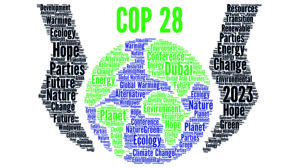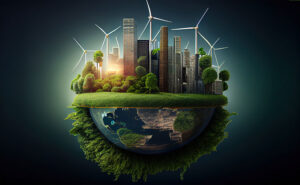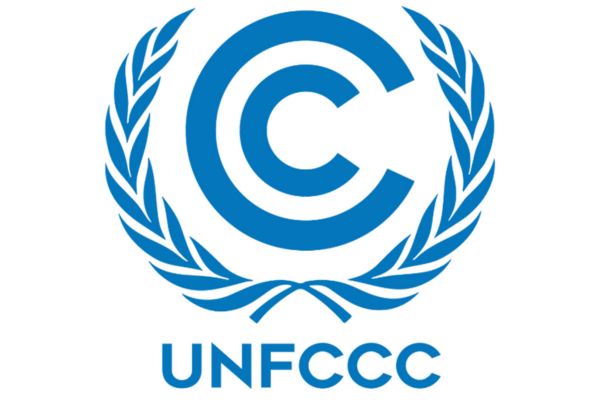For the first time, at COP28, held in Dubai, UAE, from 30 November to 12 December 2023, all countries accepted the necessity of phasing out fossil fuels and phasing in renewable energy. Subsequent agreements, such as Kyoto, will be implemented in the context of a resilience commitment to urban climate action and food systems as part of climate action.
With the focus moving from the negotiations in Dubai to its highly desired outcome, the implementation of how these worthy targets will be achieved at the national level is apparent. Nations need to ensure that the finances required to fulfill promises are available and that implementing them is helpful; that is a vital perspective because these commitments should be viewed as a minimum standard, not a high barrier to defeating climate change, especially for today’s and future generations facing the most consequences.

Countries must follow up with those commitments and turn them into action by” increasing investment in agriculture, agroecology, renewable energy projects, and so on. These steps will enable a more effective realization of the UAE consensus, and countries need to embed these commitments into the forthcoming round of Nationally Determined Contributions (NDCs); the goals of the Paris Agreement and its long-term objectives are centered Laws around the submissions of the states in their NDCs.
The Kyoto Protocol Vs Paris Agreement: What You Need to Know
The Earth Summit in Rio in 1992 marked the beginning of change since it set the stage for the formulation of the UNFCCC and the agreement on subsequent agreements, such as the Kyoto Protocol.
The Kyoto Protocol is an international treaty named after the Japanese city. It was adopted in December 1997 and designed to curb the emission of greenhouse gases. The states that ratified the Protocol agreed to reduce by 5.2 % the emission of six greenhouse gases from 41 countries plus the European Union by the “commitment period” 2008-12. Despite heated controversies about its effectiveness, it was considered the most phenomenal environmental agreement ever reached.
The Paris Agreement, held among the world’s nations, primarily aims to air international cooperation in reducing the greenhouse gases that lead to climate change. The treaty was more focused on lowering greenhouse emissions than improving the greenhouse emissions reduction measures in the Climate Change Policy known as the Kyoto Protocol. It took effect on November 4th, 2016; 195 states signed the agreement, while 190 states ratified it in January 2021.
From 30th November to 11th December 2015, France organized representatives from 196 countries to participate in the UN climate change conference, described as one of the most significant and arguably most ambitious international climate meetings ever held. The goal was nothing short of achieving a legal convention, which aimed to reduce emissions of the gases that would raise the global mean temperature more than two °C (3.6ª F) above what the world was one hundred years before the Industrial Revolution.
What's New in UNFCCC's Plans for a Greener Future?
- Understanding The Term Sustainability: UNFCCC defines sustainability as an amalgam of environmental protection, social equity, and economic development that guarantees a future for all.
- Bridging Climate Action and Development: The new method advocates for more-making high policies, which combine climate change operations and development programs addressing climate and development.
- Emphasis on Resilience: Ensuring the integrity of integration, protecting public health and safety: Another central tenet in UNFCCC’s sustainability framework is strengthening community resilience-survival options without unduly sacrificing contributions to withstand extreme climate change via principal economies.
- Encouragement of Renewable Energy Sources: In the interest of sustainable development, the UNFCCC actively promotes shifting energy sources to more sustainable forms to reduce fossil fuel sources.
- Principles of Circular Economy: The new strategy supports adopting a new policy in the circular economy, whereby activities that cause pollution are avoided through the reuse and recycling of products.
- Involvement of Stakeholders: Coordinating the climate protection aspects, the UNFCCC intends to involve all necessary stakeholders, such as the state, businesses, and civil society, in the sustainability of change, as no one can act alone.
- Financial Support for Sustainable Practices of Countries, Regional Organizations, and Other Institutions: The new strategy also introduces a coherent mechanism of seeking help and offering incentives to countries for leading victories against doping while engaging in other sustainable practices.
- Innovation Technology: Stressing the importance of technology, the United Nations Framework Convention on Climate Change (UNFCCC) supports developing and disseminating climate-friendly technologies and practices that seek to reduce greenhouse gas emissions and strengthen adaptive capacity.
- Education and Awareness: The initiatives carried out by the UNFCCC also include raising awareness and providing action concerning sustainability and climate change, as well as encouraging oneself and the sty to act in a more climate-friendlyasuring Progress: The UNFCCC further identifies the necessity for sustainable development strategies targeting different goals for different time horizons, including monitoring and reporting budgetary expenditures against planned expenditures.
- Long-term Vision: Its much-vaunted strategy outlines modest internal wins that promise long-term viability. But to meet those long-term objectives, today’s action must reinforce, not contradict, the larger aims of sustainability across generations.
Recap,
At COP28 in Dubai, all nations taking part agreed for the first time on ending fossil fuel and making a transition into renewable energy. That consensus marks a historic breakthrough for global climate efforts, putting countries on the same page concerning what needs they have pledged. These achievements must then be operationalized nationally, supported financially, and feasible. States are encouraged to set these pledges before, Nationally Determined Contributions (NDCs), which form the cornerstone of The Paris Agreement keeping global temperature rise below 2 °C above pre-industrial levels.
The UNFCCC takes another twist on CO2 and proposes that global climate action should be broader than mitigation and sustainable development. This involves building resilience, in particular for the most climate-vulnerable communities. Directly connecting to the broader socio-economic context, focusing on urban climate action and sustainable food systems. This strategy addresses our global goals for reducing carbon emissions and ensures environmental and human needs will be met. At the heart of this is the commitment to increase investments in agriculture, agroecology, and renewable energy projects essential for building a low-carbon, climate-resilient future.
At its heart, this new approach puts circular economy principles, which promote the intelligent collection and reuse of materials to prevent them from becoming pollution or waste, at the forefront of the mind. The third area of action outlined in the UNFCCC’s new strategy is also where financial support is central, helping countries transition to sustainable practices, particularly those most hateable and affected by climate change. The framework also focused on education and the evolution of carfree technology. It is an essential dimension for mitigating emissions, and at the same time, it helps to increase the resilience of countries that would be better prepared to manage climate change.
Another area to highlight is education and public roundness, as shared knowledge about sustainability issues is critical to totalizing collective action. This is a future-oriented strategy based on the need for urgent and coordinated action today to create sustainable development opportunities for generations and reconcile environmental, economic, and social demands. By linking the two issues, this holistic view sets COP28 and UNFCCC’s new framework as just steps into a more sustainable (both economically) net-zero common future resilient world.

